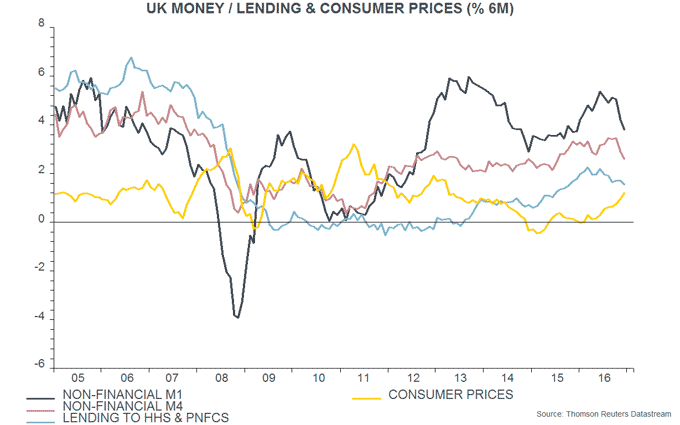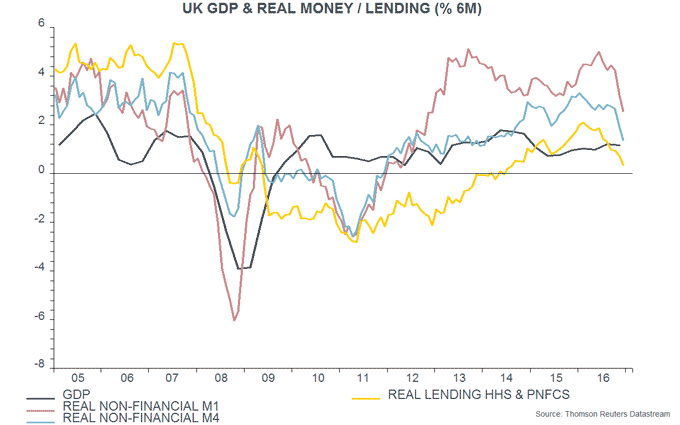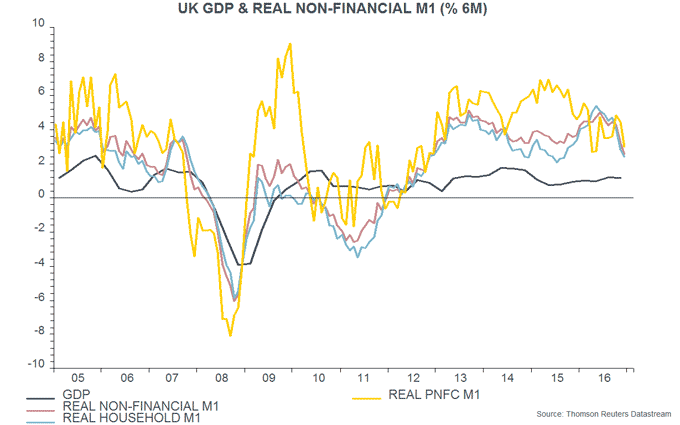Strong UK monetary expansion before and after the June EU referendum signalled that economic growth would remain solid in late 2016 / early 2017. December money numbers released today were better than November’s but trends have clearly weakened, particularly in real terms, suggesting an economic slowdown during the second half of 2017.
Some economists of a monetarist persuasion may cite still-solid annual growth of the Bank of England’s broad money measure, M4ex, as a reason for optimism about economic prospects. M4ex growth rebounded from 6.7% in November to 7.2% in December – not far below September’s peak of 7.7%.
The annual M4ex increase, however, continues to be inflated by a significant rise in money holdings of fund managers and other financial institutions earlier in 2016 – such holdings are of limited relevance for assessing near-term spending prospects. The preferred broad money measure here is non-financial M4, comprising holdings of the household sector and private non-financial corporations (PNFCs). This measure rose an annual 5.8% in December.
Annual growth rates, moreover, are slow to reflect changes in trend. The six-month increase in non-financial M4 eased to 5.2% at an annualised rate in December; three-month growth was just 3.0%. The narrow non-financial M1 measure also slowed significantly in late 2016 – see first chart.
Monthly growth of non-financial M4 recovered from 0.1% to a modest 0.3% in December. Non-financial M1 had been unchanged in November and rose 0.5% last month.
Economic prospects are related to real rather than nominal monetary trends. With consumer price momentum rising sharply at end-2016, six-month growth of real non-financial M1 fell to its lowest level since December 2012; real non-financial M4 growth was the lowest since January 2014 – second chart.
The six-month real growth rates remained solid until October 2016, suggesting respectable GDP expansion during the first half of 2017, allowing for an average nine-month lead from money to activity. Together with a positive carry-over effect from late 2016 strength, this could allow annual average GDP growth in 2017 to reach 2% even incorporating a second-half slowdown.
Household and corporate (PNFC) money trends are informative about prospects for consumer spending and business investment respectively. Six-month growth rates of real household and PNFC M1 were similar in December but household expansion has fallen significantly since October; slower GDP growth may reflect, at least initially, fading consumption strength rather than weaker investment – third chart.